MERCIER PRESS
3B Oak House, Bessboro Rd
Blackrock, Cork, Ireland.
 www.mercierpress.ie
www.mercierpress.ie
 http://twitter.com/IrishPublisher
http://twitter.com/IrishPublisher
 http://www.facebook.com/mercier.press
http://www.facebook.com/mercier.press
John Borgonovo, 2011
ISBN: 978 1 85635 696 1
Epub ISBN: 978 1 85635 977 1
Mobi ISBN: 978 1 85635 971 9
This eBook is copyright material and must not be copied, reproduced, transferred, distributed, leased, licensed or publicly performed or used in any way except as specifically permitted in writing by the publishers, as allowed under the terms and conditions under which it was purchased or as strictly permitted by applicable copyright law. Any unauthorised distribution or use of this text may be a direct infringement of the authors and publishers rights and those responsible may be liable in law accordingly.
A CKNOWLEDGEMENTS
This book was written with the assistance of a number of people. Thanks to Pat Gunn, who passed on a copy of his fascinating interview with his father George, an IRA veteran. Gerry White and Colman OMahony provided personal insights into their published work on these events, for which I am grateful. I would also like to thank Dr Donal Drisceoil of the University College Cork (UCC) School of History for assistance with illustrations; Michael Murphy of the UCC Geography Department for generous map production; Cork Fire Brigade historian Pat Poland; Cork historian Antoin OCallaghan; series editor Gabriel Doherty of the UCC School of History; and the staff at Mercier Press.
Kieran Burke and the staff at the Local Studies Department, Cork City Library, provided critical help. I would also like to acknowledge Commandant Victor Lange at the Military Archives, Dublin; the staff at the University College Dublin Archives; and Brian McGee and the team at the Cork City and County Archives. Thanks are also due to the Port of Cork for offering prompt access to its strongroom.
The National Archives of Ireland graciously granted permission to use the Hogan/Wilson photographs, which serve as an excellent documentary source for these events. Thanks to Sarah Buckley for offering her fathers photographs for publication. I am also grateful to Tony McCarthy, who provided a photograph of Scottie McKenzie Kennedy, and a copy of the Timothy Kennefick Coroners Inquest, planting seeds that blossomed in this work.
Many thanks to Ronan Kirby and Denis Kirby, who offered welcome local knowledge of Douglas/Rochestown, as well as a fruitful driving tour. I am also grateful to John Dennehy of Cobh for his expert knowledge of the port, and to Martin Buckley, formerly of the Irish Navy, for further harbour advice.
Historian Tom Mahon of Hawaii earns special kudos for graciously copying Captain Somervilles reports to the British Admiralty, which can be found in Kew National Archives. I am looking forward to Toms upcoming book on the Upnor raid.
L ANGUAGE AND S OURCES
This book sets out to examine events in the city of Cork during July and August 1922, in the conventional phase of the Irish Civil War. Its structure and style are intended to appeal to a wide readership; it is not meant to offer the last word on Cork in the Civil War, or on the National Armys amphibious offensive during August 1922. The Battle for Cork seeks to answer the question: How did a city so closely identified with militant Irish Republicanism from 1917 to 1921 pass so easily into the hands of the Irish Free State? Events are viewed deliberately from a Cork perspective.
My use of language deserves a brief mention. I call members of the anti-Treaty military force IRA Volunteers, and/or Republicans. Anti-Treaty Republicans enjoyed direct continuity with the Irish Volunteer organisation founded in 1913; that organisation became popularly known as the Irish Republican Army (IRA) in 1919, after it pledged allegiance to Dil ireann and placed itself under the control of the Dil minister for defence. Between 1919 and 1921, the Volunteer (or IRA) organisation was led by its General Headquarters Staff (which included Richard Mulcahy and Michael Collins), elected originally by a Volunteer convention in 1917. No Volunteer convention met between 1918 and 1921, and overall control of the IRA/Volunteer organisation remained a contested and nebulous issue. After the ratification of the Anglo-Irish Treaty in 1922, a National Army was formed from pro-Treaty IRA units and other recruits who pledged allegiance to the Irish Free State. This set the stage for the IRA convention of March 1922, where Irish Volunteer organisation delegates voted to elect a new governing executive and to withdraw their allegiance to Dil ireann. Members of this organisation retained the title of Volunteer, and promised to defend the Irish Republic that had been declared in 1916. When describing these people or their IRA organisation, I deliberately avoid terms such as Executive Forces, Irregulars, anti-Treaty IRA or Mutineers.
Correspondingly, I describe their military opponents as the Free State Army, National Army, National troops or National soldiers. These combatants were full-time soldiers, paid by the Provisional Government of the Irish Free State, which was a non-Republican dominion of the British crown. Since the Irish Free State was not a republic, I do not refer to its officials or supporters as Republicans. I understand the implications and limitations of terms such as invade, attack, assault, defend and liberate.
Some confusion may arise as a result of Corks status as both a city and a county. For the purposes of this book, Cork is used to mean the city of Cork; when the county is intended, I use County Cork.
The Battle for Cork relies on three prominent histories of the Irish Civil War. More than twenty years after its publication, Michael Hopkinsons Green Against Green: the Irish Civil War remains the authoritative work on the subject. Hopkinson builds on the work of two earlier Civil War historians, Calton Younger and Eoin Neeson. While preparing Irelands Civil War , Younger conducted extensive interviews with Free State Army leaders, most notably General Emmet Dalton and Commandant Frank OFriel. For The Civil War in Ireland , Cork native Eoin Neeson met surviving Civil War IRA officers in the city, many of whom knew Neesons parents from joint service in the Republican movement. From the different conversations of Younger and Neeson, a discernible narrative emerges that encompasses both sides of the firing line.
I also drew on Gerry White and Dan Harveys valuable The Barracks: A History of Victoria/Collins Barracks , Cork . Another Cork authority, Colman OMahony, provided excellent material from his book, The Maritime Gateway to Cork: A History of the Outports of Passage West and Monkstown, 17541942 . In the course of his research, OMahony interviewed a surviving member of the IRA garrison at Passage West, who provided insights regarding the landing of National troops there. Finally, I would be remiss if I did not acknowledge Anne Dolan and Cormac OMalleys No Surrender Here!: The Civil War Papers of Ernie OMalley . This exhaustive and well-organised work serves as an essential reference source for IRA communications in 1922.
Readers will note the frequent mentions of Dr James Lynchs first-hand account, The Battle of Douglas. As verified by the 1911 Census, Dr Lynch lived in the area of Douglas/ Rochestown that saw the most severe fighting of the battle. His participation as a National Army medical officer was noted in The Cork Examiner , and many of the details in his narrative match different newspaper accounts. Lynch provides the best eyewitness testimony of the battle. Newspapers also provided information about the engagement, with The Cork Examiner offering first-hand accounts from its reporters on the scene. The Irish Independent printed another eyewitness report from a journalist in the city during the three critical days. Correspondents from The Freemans Journal and The Irish Times accompanied the invading National Army forces. Photographer W. D. Hogan also travelled with the Free State assault troops, and his pictures frequently verify newspaper details.
Next page
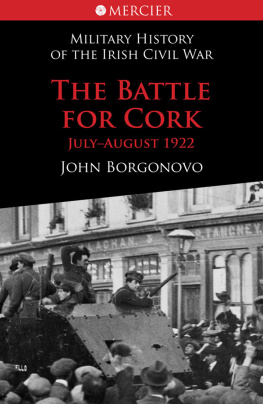
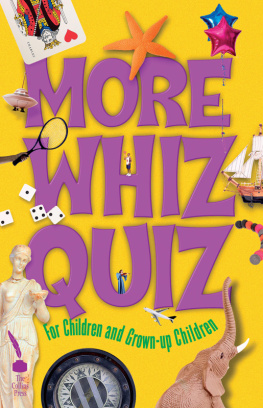
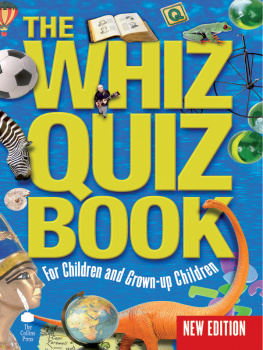

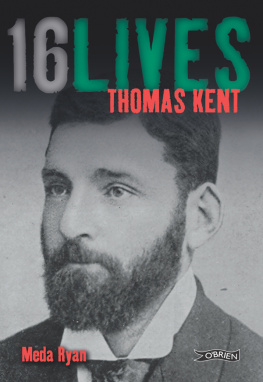
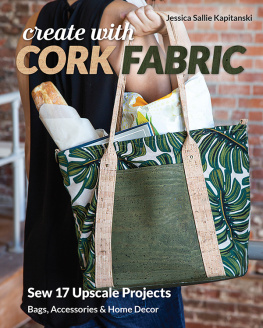

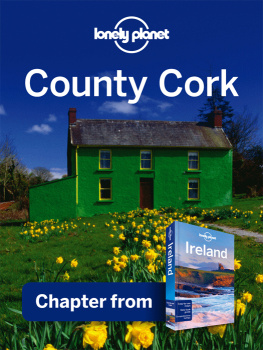


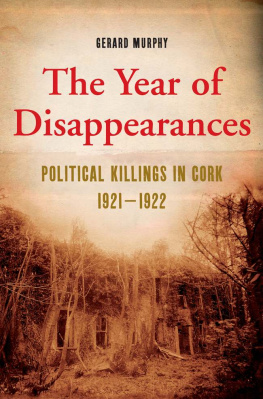
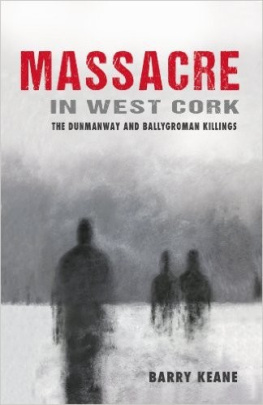
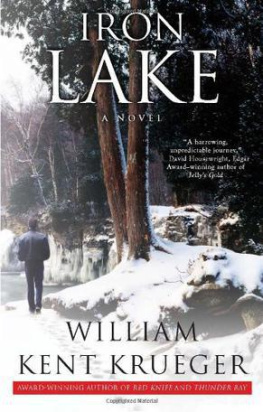
 www.mercierpress.ie
www.mercierpress.ie http://twitter.com/IrishPublisher
http://twitter.com/IrishPublisher http://www.facebook.com/mercier.press
http://www.facebook.com/mercier.press